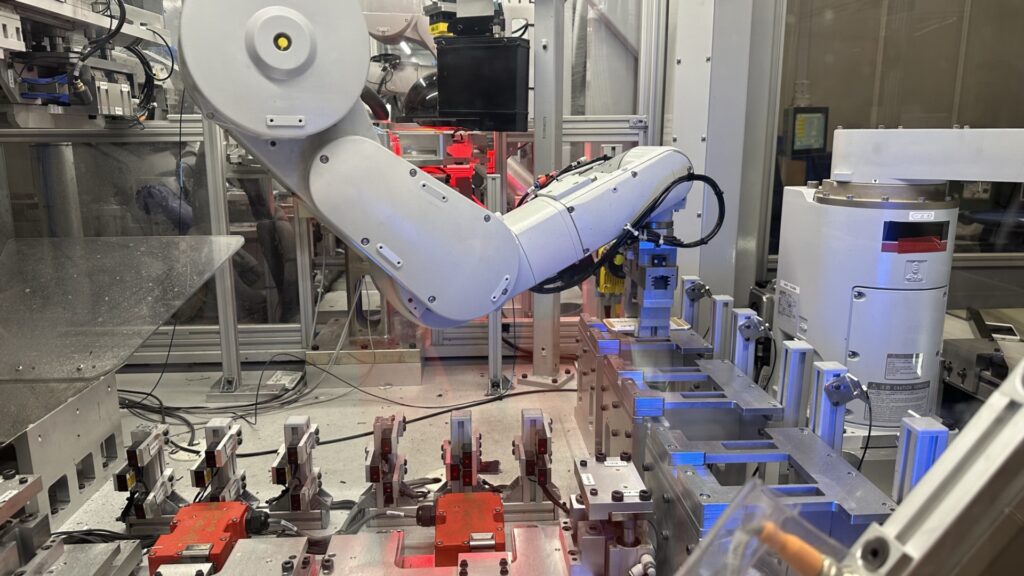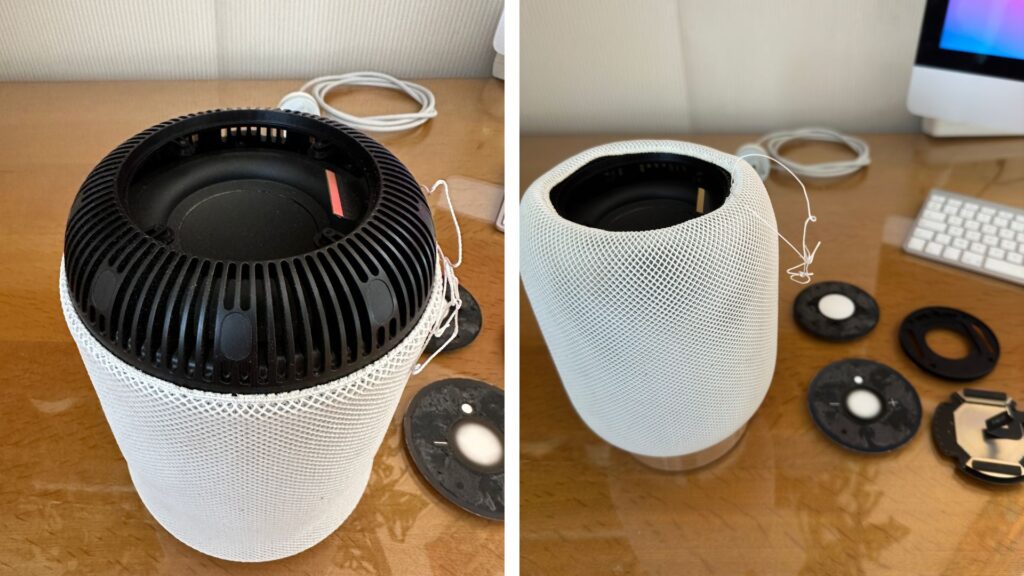Released in 2018, the very first generation HomePods feature electronic components that are sensitive to wear and time – which is completely normal when parts heat up. Changing them to extend the life of the device is no problem. And yet Apple doesn’t do this.
“ Attached you will find a video of your HomePod in operation, with several photos of the entire open-core teardown, as well as the small chip that failed (1746K) replaced by the 2146K. We recognize this faulty chip by this batch number : the 1746K or 1748K all fail one day or anotherso as soon as I see one, they are replaced even if the device came for another problem. »
This message, which I received in the summer of 2023, was not sent by Apple after-sales service. No, it was Donovan Weber, electronics and Apple enthusiast, who made it his mission to repair the first generation HomePods. A task that Apple refuses to do. Even to change a part that only costs a few cents.
Apple, often exemplary after-sales service…
First of all, it is important to set the scene. Apple’s after-sales service is undoubtedly one of the best in the world. Contrary to what the general public sees on TV and what borderline conspiracy theories say about so-called planned obsolescence, we find at Apple an extremely comprehensive repair offering and at very often decent prices. In addition, this after-sales service with sophisticated tools (read our report on this subject) guarantees repair of your devices with official components and in accordance with the rules of the art.

Personally, I would never recommend going through a third party or attempting a solo repair of an object like an iPhone, whose components are so small and fragile. Likewise, components are authenticated to guarantee your security and that of your data. Finally, the brand’s commitments to the environment are enormous, subject to third-party controls to avoid any accusation of green-washing and now included in the sales promise of a product – some like the Apple Watch going up to be “carbon neutral”.
I have dealt with this after-sales service several times and each time, the work was fast, well done and honestly priced. It allowed me to extend the life of an iPhone by replacing a battery or to save a stubborn Mac. But unfortunately, even at Apple, the rules have their exceptions. And I discovered it the hard way.


…except when it comes to HomePod
In France, I was one of the first to have a HomePod. A professional trip to the United States at the beginning of 2018 allowed us to acquire an American model and offer a test of Apple’s first connected speaker as soon as it was released in France, in the summer of the same year. Since this test, the speaker still sits in my living room and is both my main music source and my home automation bridge to control my apartment. Until this disastrous day in June 2023, when the HomePod simply did not turn on.
Nothing more, not a sound, not a reaction. The beautiful cylinder has become a paperweight. After a few checks and attempts to reset it to 0, I do what I have always done with Apple products: a quick trip to the after-sales service. I make an appointment at the Apple Store and show up a few hours later, my HomePod under my arm. An employee takes it from me and goes back to the back room to get the opinion of a technician. I am still confident at this time, I imagine that the electronics of a speaker are not those, in nanometers, of an iPhone and that it will be easy to exchange a coin for a small 100 note €.
The employee returns and I understand from his expression that the Apple experience is not going to go as planned. I remember three things from this interaction:
- My HomePod is dead, dead, it will not come back to life.
- Apple can take it and give me a first generation one (thus equivalent to mine) for €279, more commercially available at the time.
- Apple can let me have it and offer me the chance to buy a second generation HomePod for €349.
To summarize, I have the choice between a product released 5 years ago and which will cost me nearly €300 or a new product at €350. Despite my insistence, Apple did not offer any option that involved repairing my HomePod.
My decision ? Leave, then think. And above all, educate myself.
The undead HomePod, a known problem
In a few searches on the web, I realized that the first generation HomePods which gave up the ghost after a given time were legion. So numerous that repair videos are available on YouTube and almost everyone very clearly identifies one of the major problems: a Schottky diode, costing a few cents, supposed to protect the components and which, when it is broken, no longer lets the current flow at all. The diagnosis is just as simple, because this broken diode heats up and you just have to put your hand on the bottom of the connected HomePod to see that this is indeed the case.
Has Apple sized its component incorrectly? Maybe. But changing it, with the tools, robotic arms and other human experts that the tech giant has should be child’s play. Except that he doesn’t offer it and therefore leaves this business to independent repairers. Donovan, behind the Celadonie.fr site, specializes in repairing HomePods for around a hundred euros.
Without knowledge of electronics and without tools, the process is long and complex because the HomePod is rather well glued and screwed. Once the fabric has been removed, to access the faulty diode, you must dismantle all the plastic and electronic parts to get to the card which is located at the very bottom of the HomePod. Impossible to take a shortcut, the operation is an almost complete disassembly, after which you have to know how to change the welded part.


But for Donovan, who has repaired more than 250 HomePods, it’s become routine. As soon as I received it, my HomePod turned back on during the day after playing on the pool table. Honest, the repairer does not charge anything (beyond shipping costs) if his operation does not work. And it proves, in doing so, that for a decent sum for the technicality of the operation, a first generation HomePod is sometimes repairable. For €179 less and a much lower carbon footprint, which Donovan does not hesitate to display as a trophy on his site, this object released in 2018 can start again for a long life.


For several years, I have been trying to repair technical objects that are repairable and I have found myself too many times faced with after-sales service offering, the choice of a service at an exorbitant price or a pure and simple exchange of the product. Our technical objects are not infallible and you really have to be beside the point not to understand that a component undergoes normal wear — even if only from heat. But a dead component should not doom an object.
Very often, I have ended up succeeding in having my objects repaired by going through professionals or enthusiasts who take over, having in mind this idea that an object which no longer works is not necessarily a broken object. Recycling is good, but keeping your items as long as possible is even better. I’m sure Mother Nature would have appreciated having a Donovan Weber in her contacts.
Subscribe to Numerama on Google News so you don’t miss any news!
